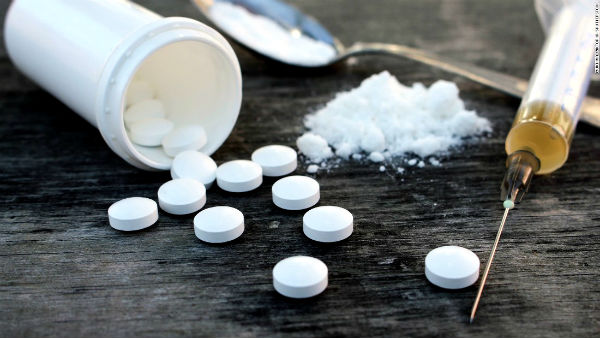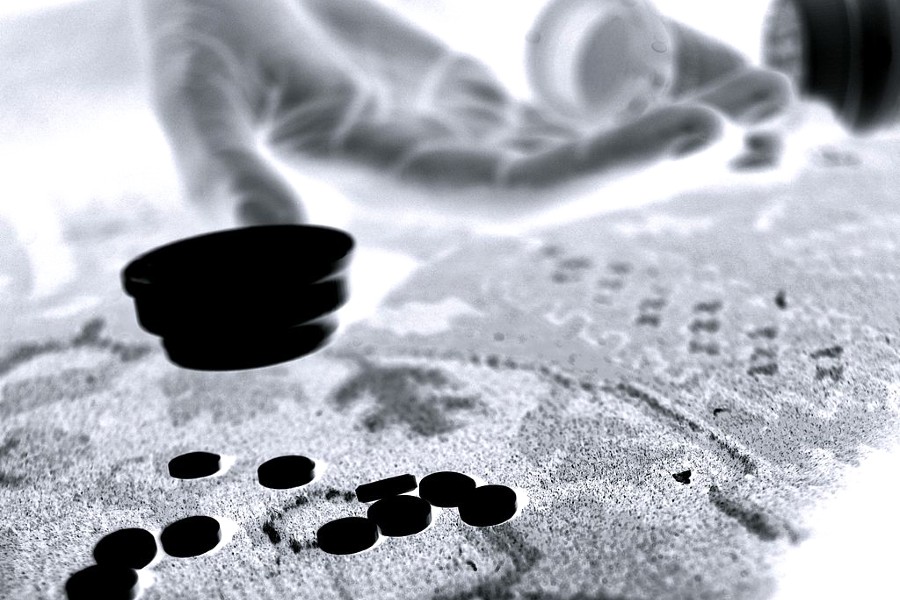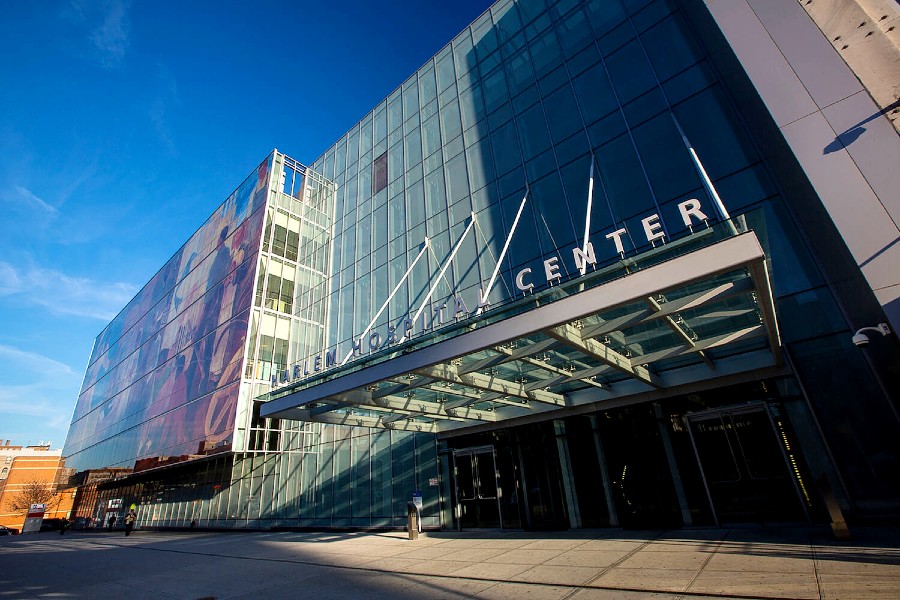 After seven consecutive years of increasing drug overdose deaths, the Health Department today announced a decrease in the number and rate of overdose deaths from 2017 to 2018 but cautioned the epidemic is not over. There were 1,444 overdose deaths in 2018 – 38 fewer deaths compared with 2017.
After seven consecutive years of increasing drug overdose deaths, the Health Department today announced a decrease in the number and rate of overdose deaths from 2017 to 2018 but cautioned the epidemic is not over. There were 1,444 overdose deaths in 2018 – 38 fewer deaths compared with 2017.
“The decrease in drug overdose deaths is promising, but far too many New Yorkers are still dying,” said Health Commissioner Dr. Oxiris Barbot. “We are closely monitoring the trends of the epidemic as they evolve and responding to upticks in emergency department visits and deaths with targeted strategies and community engagement. We remain firmly committed to expanding life-saving services and caring for New Yorkers who use drugs.”
“There is no one solution to the pain and tragic consequences of the opioid epidemic and New York City’s multi-faceted response reflects that,” said First Lady Chirlane McCray. “Individuals struggling with substance use disorders and families caught up in this scourge are our responsibility, and we will continue innovating to make sure communities have access to the lifesaving resources, services, and treatment they need.”

Although there was a reduction in overdose deaths – from a rate of 21.1 in 2017 to 20.5 deaths per 100,000 people in 2018 – the decrease did not occur equitably. Rates of overdose deaths increased in the Bronx, specifically the South Bronx, and increased among Manhattan and Staten Island residents, while they decreased among residents of Queens and Brooklyn.
The Health Department also released drug overdose data for the first quarter of 2019 (January through March), which shows 331 overdose deaths, two fewer deaths than the final quarter of 2018. The full quarterly report can be found here. The citywide decrease followed significant investments in lifesaving programs as part of HealingNYC. Since the more than $60 million HealingNYC’s launch in March 2017, the Health Department has:
- Distributed 230,000 naloxone kits throughout the city.
- Launched Relay, a nonfatal overdose intervention, in 12 emergency departments. Since its launch in June 2017, Relay has served 1,022 individuals and distributed more than 1,544 naloxone kits. The Health Department will expand the program to 15 hospitals by 2020.
- Conducted targeted overdose prevention and educational outreach through the Rapid Assessment and Response (RAR) initiative. RAR has engaged 374 community-based venues, 88 substance use treatment programs, 140 pharmacies, and 9 shelters to conduct targeted overdose prevention and educational outreach in the Bronx and Northern Manhattan.
- Expanded access to effective treatment for opioid use disorder by training 1,800 new buprenorphine prescribers.
- Expanding funding to 14 syringe service programs across the city. Syringe service programs provide crucial services to people who use drugs, including harm reduction education, naloxone training, and sterile syringe distribution. Syringe service programs served 18,274 New Yorkers in 2018.
- Promoted the City’s free mobile app, “Stop OD NYC,” to teach New Yorkers how to recognize and reverse an overdose with naloxone. The app also links individuals to nearby community-based programs and pharmacies where naloxone is available without a prescription.
In addition, in late 2018 the City launched a plan to increase overdose prevention resources in the Bronx. The plan includes connecting people who use drugs to care and services, expansion of community partnerships, increasing awareness about fentanyl, expansion of needle and syringe clean-up among other activities. The Department is evaluating the impact of these investments on the 2019 data.
2018 Data:
- Among New Yorkers ages 55 to 84, overdose death rates increased for the fourth consecutive year.
- The rate of overdose deaths among Latinos increased by 5%, while rates decreased among Black and White New Yorkers by 13% and 5% respectively.
- The rate among females increased by 7%, from 2017 to 2018, from 8.5 to 9.1 per
- 100,000, compared with a 6% decrease among males from 2017 to 2018, from 35.0 to 33.0 per 100,000.
- Overdose deaths decreased among residents of Brooklyn (-82 deaths) and Queens (-55 deaths).
- Overdose deaths increased from 2017 among residents of the Bronx (+29 deaths), Manhattan (+42 deaths), and Staten Island (+14 deaths), though in Staten Island and Manhattan are lower than in 2016.
- The neighborhoods with the highest rate of overdose death — East Harlem in Manhattan, and Crotona-Tremont and Hunts Point-Mott Haven in the South Bronx— had overdose rates more than twice the citywide average.
- Fentanyl — a potent, synthetic opioid 30 to 50 times stronger than heroin — was detected in 60% of all overdose deaths. For the second year in a row, fentanyl was the most common substance identified in overdose deaths.
- Cocaine was involved in 52% of overdose deaths in 2018. Since 2014, the rate of cocaine-involved overdose death has more than doubled (from 4.7 to 10.7 per 100,000 in 2018).
- 157 overdose deaths involved cocaine and fentanyl without heroin, an increase from
- 146 overdose deaths in 2017.
- Half (50%) of all overdose deaths involved multiple central nervous system depressants, such as alcohol (40%), benzodiazepines (29%), and opioids (80%).
- Opioid painkillers, excluding fentanyl, were involved in the fewest number (156) of overdose deaths since 2009, when opioid painkillers were involved in 145 deaths.
The City is committed to helping New Yorkers with addiction receive treatment and care. Naloxone is available for free from registered Opioid Overdose Prevention Programs. The Health Department also offers regular naloxone trainings, which teach New Yorkers to recognize the signs of an overdose and respond by calling 911 and administering naloxone. The trainings are free, and all participants are offered a free naloxone kit.
Treatment with methadone or buprenorphine is highly effective for opioid addiction and can reduce the risk of overdose. Individuals seeking support or treatment for substance use issues for themselves or their loved ones can contact NYC Well by calling 1-888-NYC-WELL, texting “WELL” to 65173 or going to nyc.gov/nycwell. Free, confidential support is available at any hour of the day in over 200 languages.
If you witness an overdose, call 911 immediately.
“There is no doubt that this decrease in the number and rate of overdose deaths is good news. We cannot diminish any margin between life and death when we can save even one life,” said uptowns Congressman Adriano Espaillat. “It is clear that the ubiquity of opioids — and proliferation of highly lethal synthetic analogs — does not discriminate among New Yorkers. I am especially concerned that the rate of overdose deaths in East Harlem remains among the highest in the city. The New York City Department of Health and Mental Hygiene and Commissioner Barbot are 100 percent committed to addressing this challenge. We are fortunate to have such a partner and resource in our fight against opioids and overdose deaths, and I will continue to make sure that these proven interventions continue to be available and implemented for the well-being and safety of my constituents and all New Yorkers.”
Staten Island District Attorney Michael E. McMahon said, “The opioid crisis continues to take a tragic toll on the lives of far too many, and 2018 proved that much more work needed to be done on Staten Island and throughout the City before we could declare victory. Fortunately, we have seen signs of hope in early 2019 data on Staten Island. There is no doubt that we are still fighting an uphill battle, but we are making significant progress in our mission to save lives. We will continue our tireless work to overcome this scourge together with our partners in the NYPD, community and health providers, and every New Yorker affected by this crisis.”
Brooklyn District Attorney Eric Gonzalez said, “I am encouraged by the report that overdose deaths went down citywide, and declined significantly in Brooklyn. While we have a lot more work to do, I believe that the approach my Office has taken — those arrested with any controlled substance are offered treatment options to address their needs and naloxone kits to prevent overdoses instead of criminalizing them for drug use — is the most effective way to deal with this health crisis.”
Manhattan District Attorney Cyrus Vance, Jr. said, “As the opioid crisis continues to take a deadly toll on our nation, this report indicates some progress in reducing the tide of fatal overdoses in New York City. We must strengthen our efforts to support and protect our communities from opioid addiction and devastating opioid-related fatalities. To that end, my Office will continue our investments in HealingNYC, Manhattan HOPE, and RxStat, our advocacy for Mayor de Blasio’s plan to establish Overdose Prevention Centers, and our partnership with the Department of Health and Mental Hygiene to support its lifesaving work.”
“The overall decline in opioid overdoses in NYC is welcome news as our nation continues to deal with this epidemic. But we have to keep pushing. No one should be dying of preventable overdoses, especially when we have all the tools to stop them. That’s why our office has been proud to host opioid overdose trainings throughout the Borough, which have certified hundreds of people to use Narcan, a life-saving nasal spray. By partnering with healthcare institutions and community stakeholders, we can defeat this crisis that has claimed too many lives,” said Brooklyn Borough President Eric L. Adams.
“The Health Department’s newly released report revealing a decrease in drug overdose deaths across our City indicates we have made the necessary investments to effectively curtail this devastating epidemic. However, I’m greatly concerned that this decrease has not been equitable across the five borough, with the Bronx bearing the brunt of this epidemic and experiencing an increase in overdose deaths,” said State Senator Gustavo Rivera, Chairman of the Senate Health Committee. “As a member of the Senate Joint Opioid Taskforce and a Bronxite, I look forward to identifying and implementing efficient strategies, including my Safe Consumption Services bill, to finally put an end to a crisis that continues to ravage so many communities across the state.”
“This comprehensive report shows that the opioid overdose crisis in New York City continues to plague many neighborhoods and that fentanyl and cocaine are increasingly involved in overdose deaths. The DOHMH has put in place robust intervention and evidence-based treatment programs, and I appreciate its continued, targeted investment in saving lives across the boroughs,” said Assembly Member Linda B. Rosenthal, Chair of the Assembly Committee on Alcoholism and Drug Abuse.
“As Chair of the City Council’s Committee on Mental Health, Disabilities, and Addiction, I am encouraged by the decrease of overdose deaths in Brooklyn and Queens. Unfortunately, declines were not present in East Harlem and the South Bronx – two of the neighborhoods I represent. This further demonstrates the need for hyperlocal, comprehensive planning, such as the Bronx Action Plan, to combat our city’s opioid epidemic,” said Council Member Diana Ayala. “I am committed to working with the Administration to ensure our communities receive the resources necessary to decrease overdose deaths and connect people to effective treatment.”
“Our city’s battle against the opioid epidemic will be long and difficult,” said Harlem Council Member Mark Levine, chair of the health committee, “This data shows early signs that our multi-front strategy is having an impact. We need to double down on prevention, treatment, and harm reduction programs in order to save the lives of the thousands of New Yorkers caught in the grips of this deadly addiction.”
“It’s heartening to hear that we have seen a reduction in overdoses citywide. Our work does not stop there. We need to continue investing into preventative measures to ensure New Yorkers are aware of the dangers of opioids,” said Uptowns Council Member Ydanis Rodriguez. “I will continue working with my colleagues, Health Commissioner Dr. Oxiris Barbot, and Mayor de Blasio to ensure our communities continue receiving the resources they need to further address the opioid crisis.”
Become a Harlem Insider!
By submitting this form, you are consenting to receive marketing emails from: Harlem World Magazine, 2521 1/2 west 42nd street, Los Angeles, CA, 90008, https://www.harlemworldmagazine.com. You can revoke your consent to receive emails at any time by using the SafeUnsubscribe® link, found at the bottom of every email. Emails are serviced by Constant Contact








